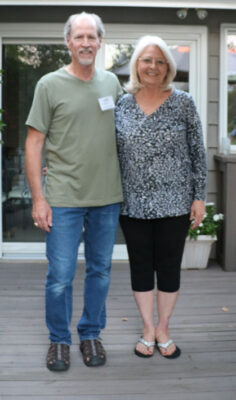 post and photos by Donna Short, Chapter member and volunteer
post and photos by Donna Short, Chapter member and volunteer
Home of Matthew Broderick and Barb Cason
Wednesday Sep 13 (55 attendees)
Saturday Sep 16 (48 attendees)
Prior to the native plant movement, Matt was involved with horticulture at a few for profit businesses. Later, he joined MOBOT’s Shaw Nature Reserve where he worked with Scott Woodbury, his supervisor. He became a Wild Ones member in the early days.
His free time was limited during those years but now in retirement he is able to expand his involvement with native plants and Wild Ones. Matt’s horticultural background is evident in his scientific approach and as a result of his early career we see many exotics included in his garden.
Thank you to Matt and Barb for sharing your garden with us!
Matt proudly advertises his Wild Ones affiliation in the front yard. He says that several neighbors and walkers have mentioned that they love my yard and what I have accomplished there. Some question “what is this plant?”. I have provided them with seeds and plants of what they are interested in whenever possible!
The front yard garden area includes Eastern Blazing Star (Liatris scariosa), Missouri Coneflower (Rudbeckia missouriensis) and Purple Coneflower (Echinacea purpurea).
One of Matt’s goals is to reduce the traditional lawn area.
New England Aster (Symphyotrichum novae-angliae) with Small Palafox (Palafoxia callosa) left of the aster which grows in rocky, chalky soil. Also included Prairie Dropseed (Sporobolus heterolepis) and Little Bluestem (Schizachyrium scoparium). The New England Aster is a volunteer that would not typically grow in this type of soil. Matt plans to move it after it flowers.
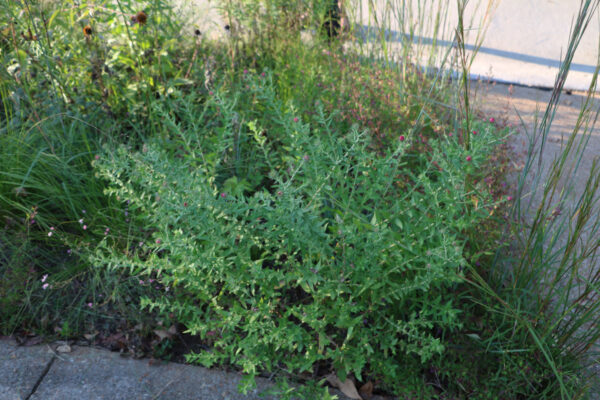 Last year, Matt replaced a Bradford Pear that he inherited from the previous owner with this American Hornbeam (Carpinus caroliniana).
Last year, Matt replaced a Bradford Pear that he inherited from the previous owner with this American Hornbeam (Carpinus caroliniana).
Matt’s garden has resulted mainly from broadcasting seed. During his years at SNR he had access to seeds and utilized them to begin and maintain his native plant garden. He has taken Scott Woodbury’s advice to try to maintain a natural garden that looks intentional versus one that looks too wild.
He has combatted deer grazing by having a large number of plants and using Liquid Fence, which he believes is effective because he sprays early in the spring which trains the deer to avoid the area. Also, his six foot fence is certainly a deterrent.
Entering the yard, Common Milkweed (Asclepias syriaca) is interspersed throughout. The New England Aster (Symphyotrichum novae-angliae) is budding and ready to bloom!
A group of Buckeyes Trees (Aesculus pavia) are clustered together under an Oak tree.
Solomon’s Seal (Polygonatum biflorum) and Golden Ragwort (Packera aurea)
Birdhouses and birdbaths are interspersed throughout the yard. Birdhouse under an Oak tree. Birdbath surrounded by Garden Phlox (Phlox paniculata).
Matt installed a pond and waterfall in 2012. He has since lost the tree that was shading that area but the plants seem to be thriving even with the additional sun. The Cardinal Flower (Lobelia cardinalis) plants were amazingly tall!
Bordering the waterfall is Rose Turtlehead (Chelone obliqua) – which has out competed the Copper Iris (Iris fulva) and Queen of the Prairie (Filipendula rubra). Also, Swamp Milkweed (Asclepias incarnata), Blue Mist Flower (Conoclinium coelestinum), Closed Gentian (Gentiana andrewsii) and Joe Pye Weed (Eutrochium purpureum) are included.
Water Lily (Nymphaea odorata) and Pickerel Weed (Pontederia cordata) found in the pond area, along with the Cardinal Flower (Lobelia cardinalis).
Rose Turtlehead (Chelone obliqua)
New planting – Ebony Spleenwort Asplenium ebeneum)
Matt has an abundance of trees and shrubs of all sizes throughout. Cedar Sedge (Carex eburnean) planted under a River Birch.
Crested Iris (Iris cristata) in waiting for spring!
In the future Matt plans to reduce the area devoted to turf grass and revamp areas that he feels he has neglected or where an aggressive plant has taken over. As trees grow, he faces the challenge when previously sunny areas become shady. He is in the process of eliminating the non-natives on his property and adding natives to the front yard. His last resort selling point for planting natives is very simple: if areas of your lawn are too hard to mow or too hard to grow – convert to a native garden!

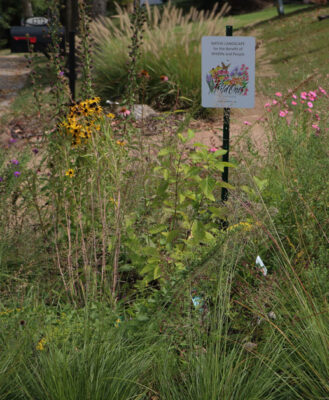
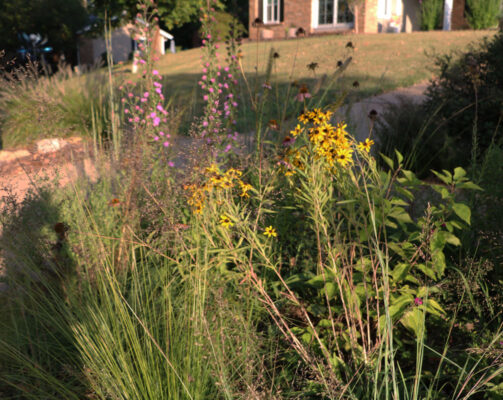
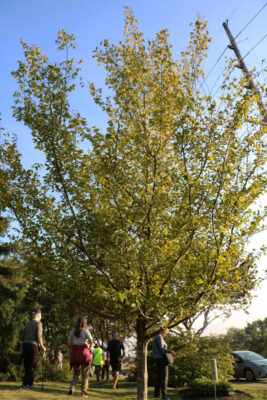
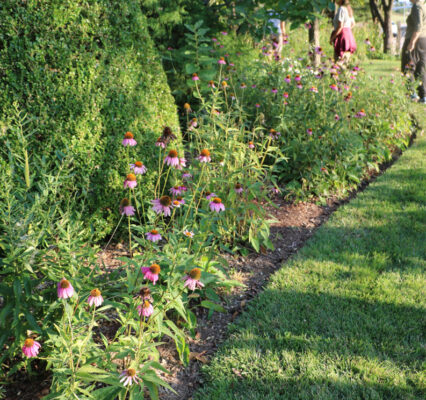
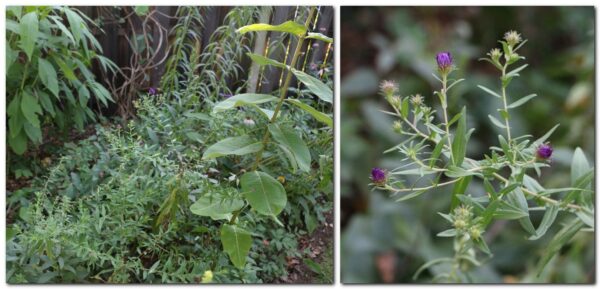
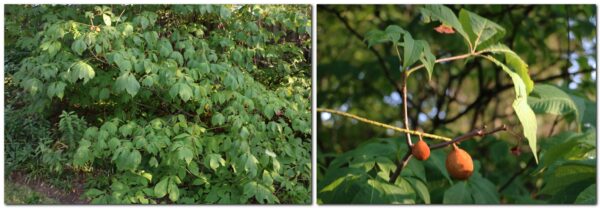
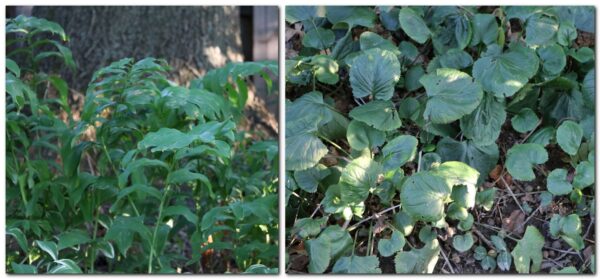
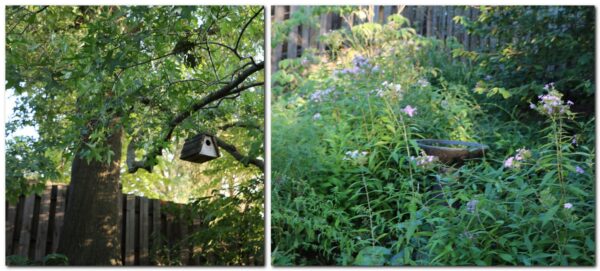
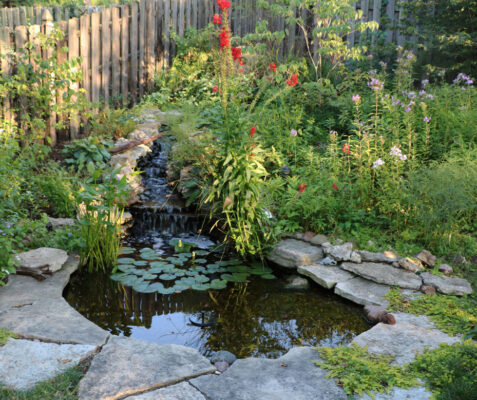
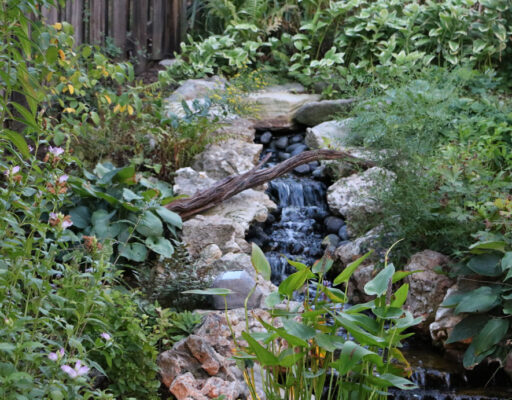
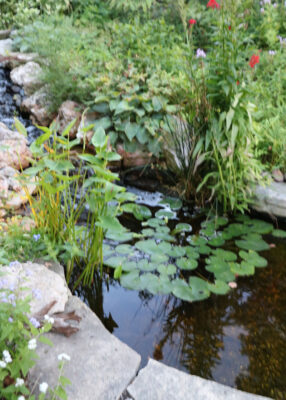
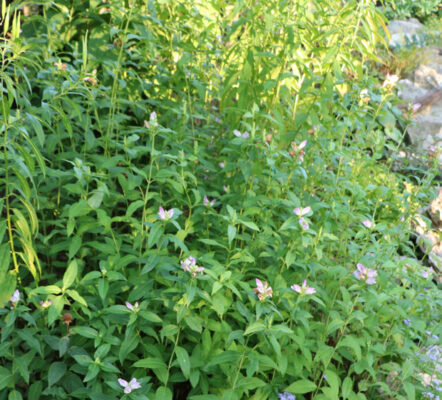
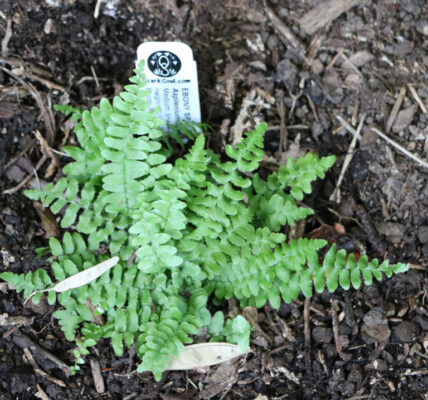
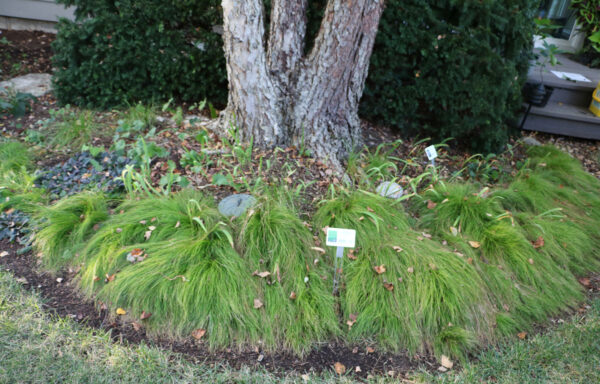


Looks like I missed a terrific garden tour! great ideas that might work in my property. thanks ,
Matt
Thanks for commenting Nancy. Starting next spring I would like to be able to give smaller group tours(5-15 people) every month(?) if there is interest so I can actually walk around & describe the planting & maintenance process of my garden.